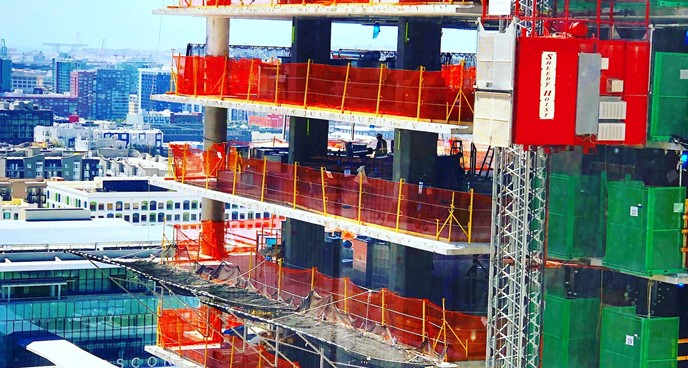By 2060, it’s been estimated that the world will add 2 trillion square feet of buildings. That’s the equivalent of putting up another New York City every single month for the next 40 years. Urban areas around the world continue to support the rising global population but at what cost? As it becomes an increasing concern, it’s time to look at cities for what they are: a leading contributor to climate change.
Even if they symbolize a step towards the future through the growth of our cultures and higher quality life, the environment is suffering. In fact, it’s been designated as one of the five areas where we need to drive change if we hope to avoid climate disaster.
Let’s take a look at how buildings not only impact the climate itself but what we can do to make them more environmentally sustainable as we grow as a society.
How do buildings impact the climate?
The process of constructing buildings not only has adverse effects on the environment but also continues to have impacts for as long as they’re in use.
The building materials, such as concrete and steel, used in the construction phase are detrimental to the environment due to emissions. These two materials alone account for 10 percent of the world’s annual greenhouse gases. That means putting up the equivalent of 480 New York Cities will certainly take a hit on the environment. Furthermore, while technology may improve in the coming years, there is not currently a way to create concrete or steel without releasing carbon dioxide.
Once the buildings are constructed, the problems aren’t over. Many people think of “saving the environment” as turning off lights or using less water. Yet, this is actually small in the grand scheme of the environment. Where large buildings come into play is their heating and cooling. The air conditioner or heater are the biggest consumers of electricity out of anything else in the building.
Additionally, as noted above, cities normally indicate a higher quality of life. People move into the cities and out of rural areas to take better jobs, get better education, and obtain better healthcare. As people seek these opportunities, they’ll become richer as the world becomes hotter and more populous. That ultimately means more AC units as well. It’s estimated that by 2050, there will be more than 5 billion air conditioners. You’ll see the number of heats and refrigerators (also harmful to the environment) increase right along with those AC units.
What can we do?
While construction in some cases is inevitable, buildings are increasing left and right. And the truth is – when used wisely – more than enough office space already exists. There are a couple of ways that we can reinvent our current practices to better promote the environment. This includes using the space we already have more wisely and constructing the buildings we must build to be more sustainable.
For one, we must evaluate, do we really need the equivalent of 12 New York Cities going up around the world every year for the next 40 years? The truth is that we have enough office space for everyone. We’re just not distributing it wisely. Reevaluating what it means to construct a new building for a new purpose when there are existing buildings that can serve us – and more importantly the environment – is critical to how our climate will fare in the future.
Furthermore, the design of these buildings is also critical. Materials must become more sustainable and the designs should consider how to actively combat it. Take Singapore for example. They’re nicknamed the “Garden City” because of the greenery they now require companies to put on their buildings. In fact, any greenspace you take away from the city by building, you must put back with greenery on the building to improve carbon emission and maximize solar efficiency. Singapore is a city of the future and has revolutionized how intensively urban communities can think outside the box when confronted with climate issues.
Final thoughts
When buildings account for more than one-quarter of all greenhouse gas emissions, it’s time to take a look at how we can address the real problems. Recycling and turning off the lights are no longer enough. It’s time to actively seek change in how we construct our world. While it can be difficult to change the very fabric of our society, this is what will ultimately make the difference. Start where people live and work and the rest will follow.







